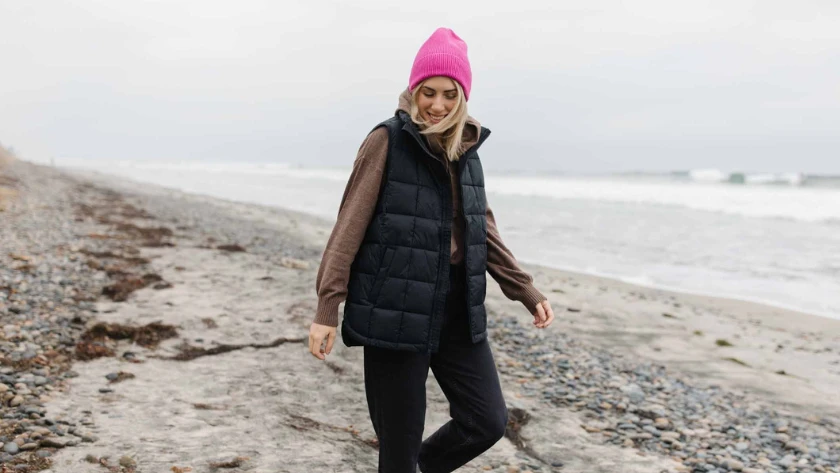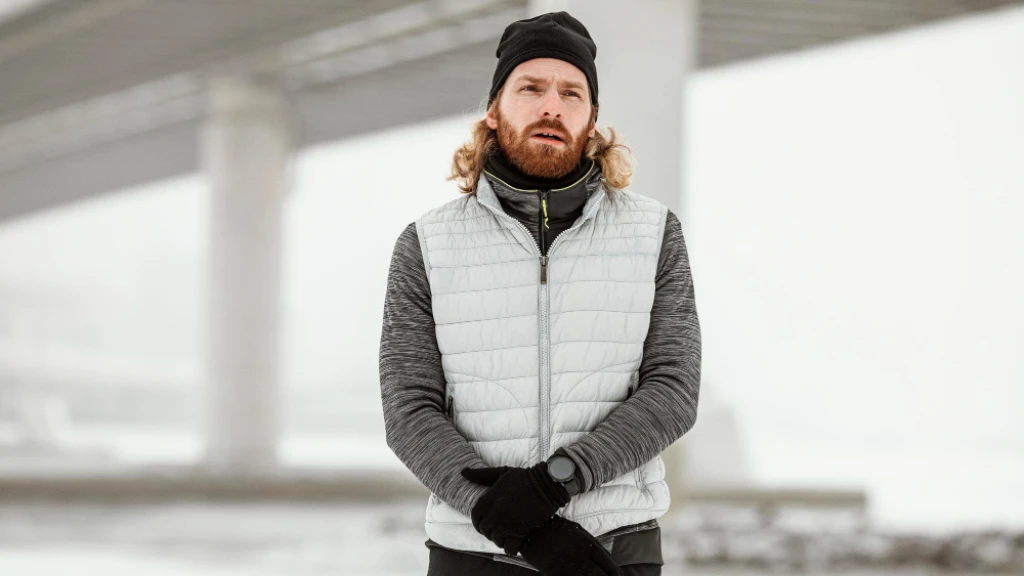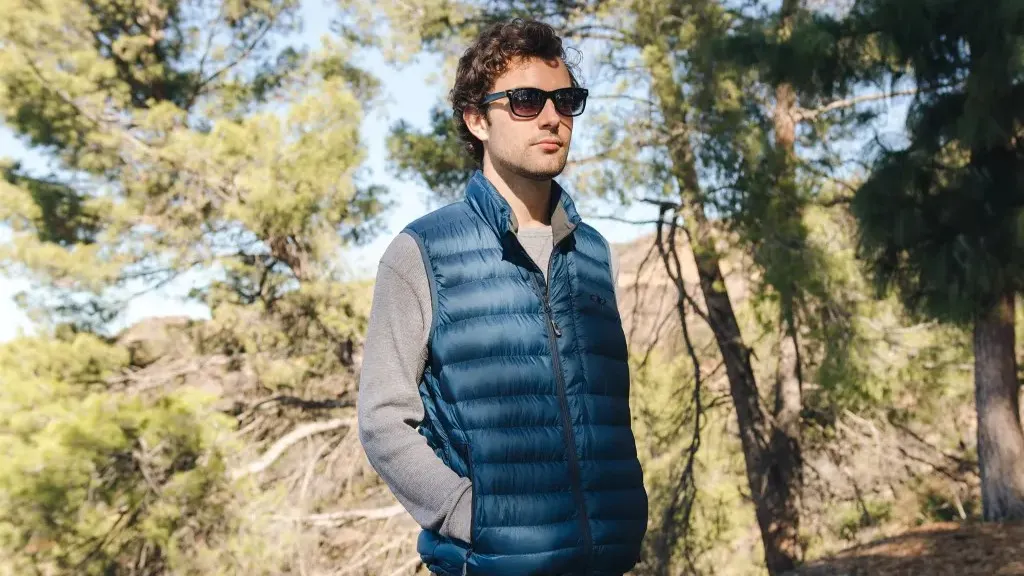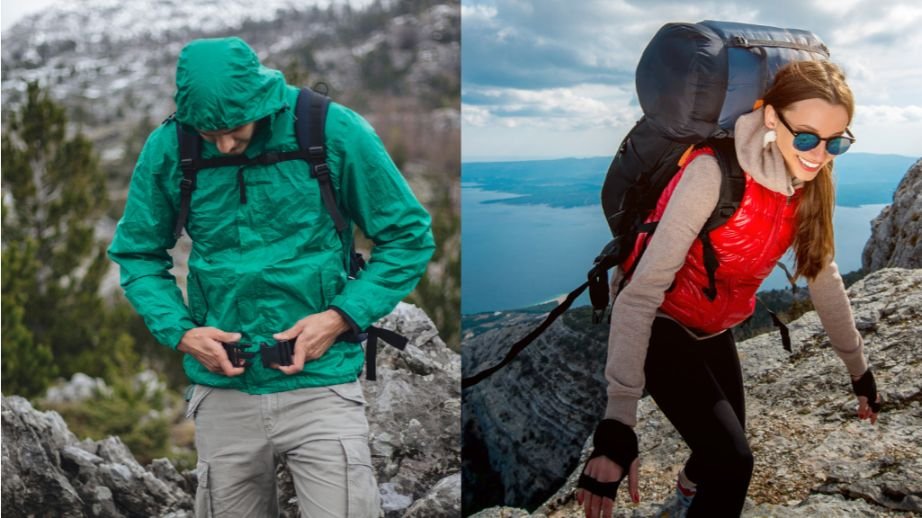You’d be surprised how many hikers I bump into on the trails who aren’t even in the loop about hiking vests. They come packed with features specifically tailored for us hikers. It’s astonishing how something so simple can make such a massive difference in comfort and warmth.
I’ve grown to love hiking in vests so much that I can’t imagine hitting the trails without one. It’s like they were made with a special formula: warmth, without the bulk, and freedom, without the chill.
Let’s explore how a hiking vest can be your ally against the cold, making your hikes even more enjoyable and how to choose the best possible option.
Can a Hiking Vest Provide Warmth In Cold Weather?
Absolutely, a hiking vest can keep you warm in cold weather. Your core is where you need warmth the most, and that’s exactly what a vest targets. Vests are not only lightweight but also essential for trapping heat without being too bulky.
They shine as a layering piece too, offering the much-needed core warmth while allowing your body to breathe, preventing the uncomfortable sweaty feeling even when the temperature dips.
Why Choose a Hiking Vest for Cold Weather?

The Weight-to-Warmth Advantage
When you’re preparing for a hike, especially in cold weather, every ounce counts. That’s where the magic of a good hiking vest comes into play, particularly those filled with down.
Down vests are champions because of their incredible warmth-to-weight ratio. They provide a lot of warmth for very little weight. Let’s dive into the specifics:
- Fill Power Rating: This is a number that measures the loft or fluffiness of the down and thus its insulating power. The range typically goes from 600 to 900. The higher the number, the better the down will insulate, meaning you’ll stay warmer without adding bulk to your pack.
- Weight: Most down vests weigh between 200-300 grams (or 7-10.5 ounces). This is incredibly light, considering the warmth they provide. To put it in perspective, that’s lighter than a can of soup!
This balance of warmth and weight is crucial for hikers. It means you can easily pack a vest for extra insulation without worrying about weighing down your pack. Plus, when you’re on the move, you won’t feel restricted by heavy layers.
Breathability and Moisture Management
The genius of a vest lies in its design. By keeping your core snug while leaving your arms free, you get this amazing underarm ventilation that simply can’t be matched by full-sleeve jackets.
But what about super chilly winds? Here’s where layering becomes important. A breathable base layer under your vest works wonders. It pulls moisture away from your skin, and then the vest traps the warmth around your core. This dynamic duo keeps you dry and toasty.
And if the wind really picks up, you can always throw a lightweight, wind-resistant shell over the top. This setup gives you flexibility and control over your body temperature like nothing else.
Insulation Without Overheating
Our bodies are pretty amazing heat machines, churning out a whopping 200-250 Watts of heat during a stroll and even more when we’re pushing hard uphill or picking up the pace. That’s like a small space heater you’re carrying around!
The trick is to keep that warmth close without letting it build up and make you overheat. That’s where a vest comes in.
Vests trap that precious body heat right where you need it – around your core, keeping your vital organs warm and functioning optimally. But they do it in a way that doesn’t restrict your arm movement or trap excess heat.
Budget-Friendly Option
Vests are a great alternative to hiking jackets. They’re typically 20-30% cheaper than their full-sleeved counterparts, which means more cash in your pocket for your next adventure. And who doesn’t love the sound of that?
Keep an eye out for end-of-season sales. That’s when you can snag high-quality vests for a fraction of the price. I once picked up a top-tier vest for half off just because I waited until the end of winter. Patience pays off!
How to Choose the Right Hiking Vest?

Insulation Type
There are two main insulation types for hiking vests: down and synthetic. From my adventures, I’ve learned that down is unbeatable for warmth-to-weight ratio but it doesn’t take kindly to water.
If you’re trekking places where the rain is common, you might want to lean towards synthetic. Synthetic insulation keeps you warm even when it’s wet and dries out pretty fast.
Weight
Lightweight vests are gold. They keep you warm without feeling like you’re carrying an extra backpack on your chest. But don’t just look at the weight. Check out the warmth too. Sometimes, a bit extra weight means a lot more warmth, which is a trade-off worth considering, especially in chillier spots.
Weather Conditions
Think about where you’re heading. For chilly mornings that turn into warm afternoons, a fleece vest is usually more than enough. Heading into colder, windier areas? Look for something with windproofing. And if rain is a frequent visitor, don’t forget about that water-resistant outer layer.
Conclusion
What I noticed is that the best hiking vests aren’t far behind specialized Arc’teryx or Patagonia jackets when it comes to fending off the cold. In fact, I’d go as far as to say they’re a fantastic alternative.
I’m not claiming that vests are the be-all and end-all for every chilly hike. When the temperature plummets to sub-zero temperatures, you might want to reach for something more substantial.
But for brisk mornings or cooler evenings, a quality vest is perfect. If you haven’t yet added a hiking vest to your outdoor wardrobe, it’s time to give it a go!

Lukas Heller
Hey there! I’m Lukas, co-founder of BigfootHiking.com, alongside my adventurous wife Martha. Originally from Germany, I landed in Phoenix, Arizona, in 2015, where I’ve been scouting out new trails ever since (though they’re getting scarce!). By day, I’m a software developer, but my heart belongs to hiking – I’m always plotting our next trip. When I’m not coding or on the trails, you’ll find me hanging out with our Pit Bull, Zeus.




